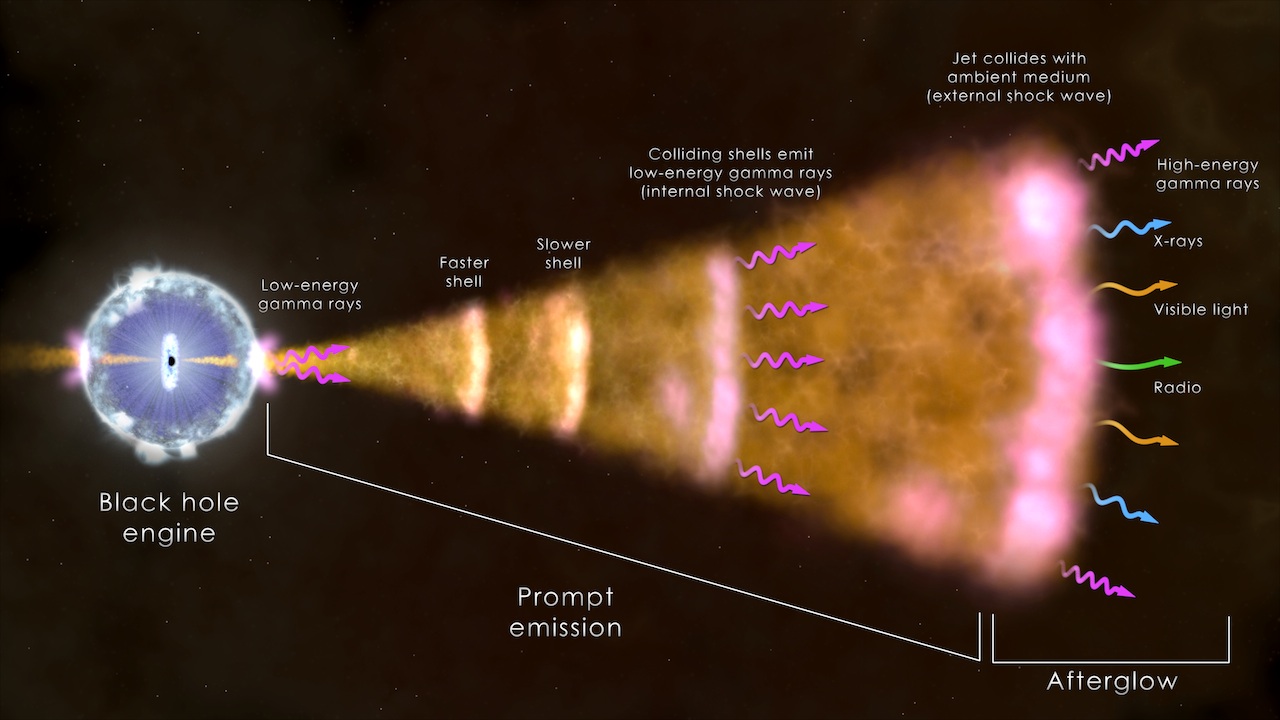
 Credit: NASA Goddard
Credit: NASA Goddard
Glow and Afterglow
Astonishingly powerful events called gamma-ray bursts (or GRBs for short) happen somewhere in the Universe just about every day. Gamma-ray bursts are catastrophic explosions producing brief flashes of high-energy radiation and last from fractions of a second to many minutes. These bursts come in two flavors: very brief bursts produced by the collision a neutron stars in binary systems, and some longer-duration bursts produced by the explosive collapse of a massive star. The image above illustrates how a GRB produces such high energy emission. A massive star dies when it runs out of thermonuclear fuel. When this dire event occurs, the center of the star collapses into a black hole while the rest of the star explodes outward, producing a quasi-spherical hot shocked shell around the dead star. This black hole becomes the central engine of the gamma-ray burst by accreting matter from a disk made up of the inner layers of the dead star. As matter in the disk spirals faster and faster towards the black hole, some of the more fortunate atoms escape and are shot away in a powerful jet of high-energy sub-atomic particles and radiation. This jet blasts into the hot, glowing supernova remnant and generates gamma-rays. As the jet breaks out into space, the shock cone opens up, and faster moving material in the jet collides with slower moving material, generating more high-energy emission. This all happens within seconds to minutes. The jet finally stalls after sweeping up enormous amounts of surrounding interstellar material, producing a longer-lasting afterglow of lower-energy X-ray and ultraviolet radiation. The existence of these afterglows played a crucial role in determining the nature of GRBs by allowing astronomers to pinpoint their locations in distant galaxies.
Published: April 20, 2020
<
HEA Dictionary ● Archive
● Search HEAPOW
● Other Languages
● HEAPOW on Facebook
● Download all Images
● Education ● HEAD
>

Each week the HEASARC
brings you new, exciting and beautiful images from X-ray and Gamma ray
astronomy. Check back each week and be sure to check out the HEAPOW archive!
Page Author: Dr. Michael F. Corcoran
Last modified Tuesday, 27-Feb-2024 10:15:17 EST


